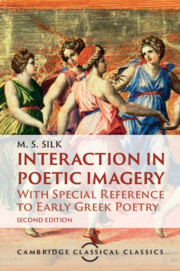Book contents
8 - Aural interaction
from Part II - The Categories
Published online by Cambridge University Press: 31 January 2025
Summary
Any detailed discussion of alliteration and assonance in Greek must take account of certain general considerations. The most general, I suppose, is the question – if it is worth calling a question – whether alliteration, in particular, existed as a significant possibility in Greek poetry at all. As is well known, alliteration was not formally recognised by the ancient Greek stylisticians, although they did, of course, recognise under various names several of the forms of sound-patterning and sound-repetition of which alliteration is a particular type. Most modern Hellenists have shown the good judgement that they have shown elsewhere – in regard to the ancients’ inattention to epic formulaism, for instance – in declining to interpret such a silence as the voice of authority, and have sensibly allowed their aesthetic faculties rather than dogmatic preconceptions to pronounce on the question of significant existence, although there have been complete sceptics. A few types of marked exploitation of alliteration in Greek will be noted, and this evidence can serve as adequate for an answer, if evidence is still thought necessary.
- Type
- Chapter
- Information
- Interaction in Poetic ImageryWith Special Reference to Early Greek Poetry, pp. 173 - 193Publisher: Cambridge University PressPrint publication year: 2025

